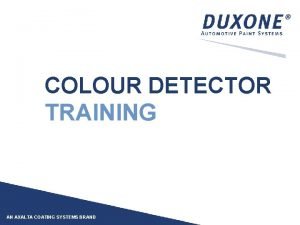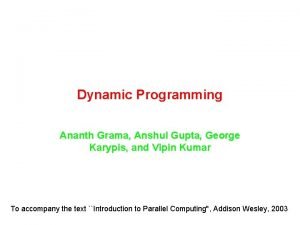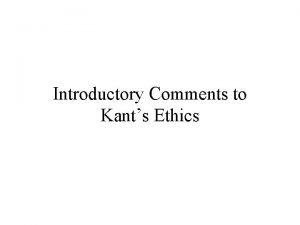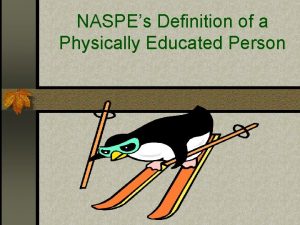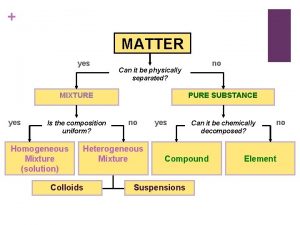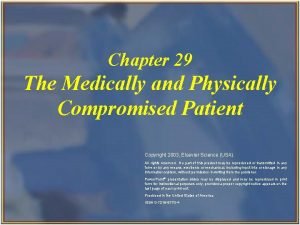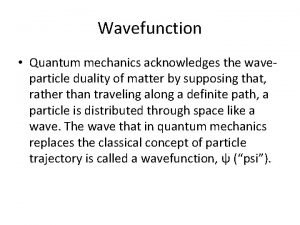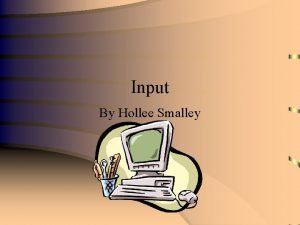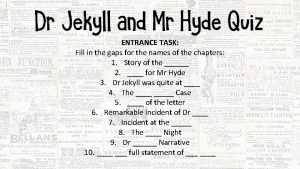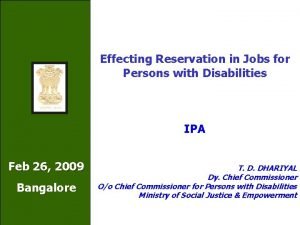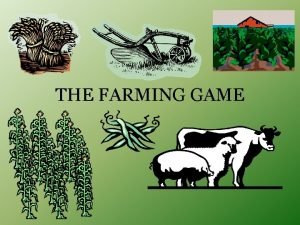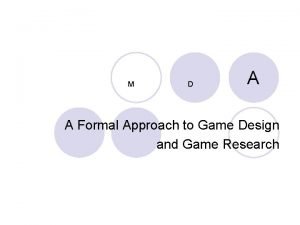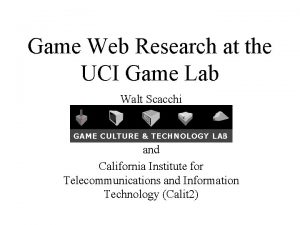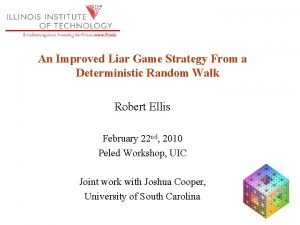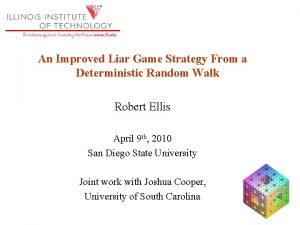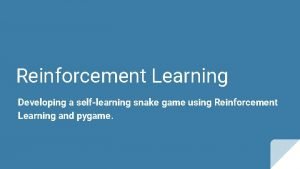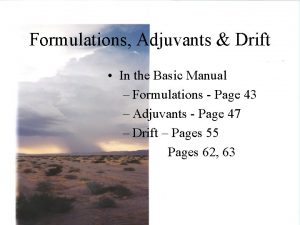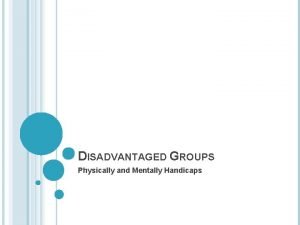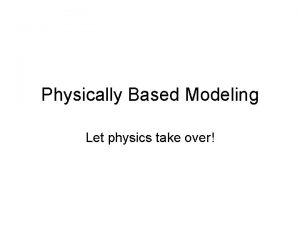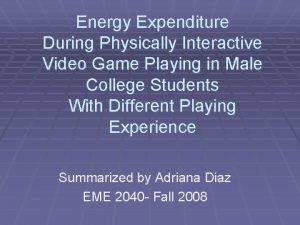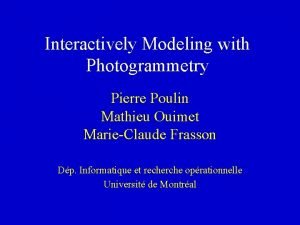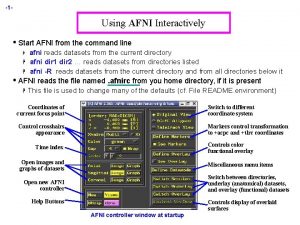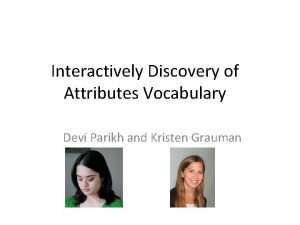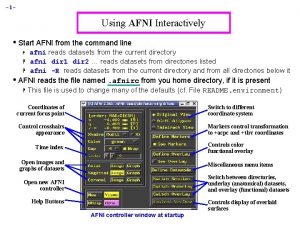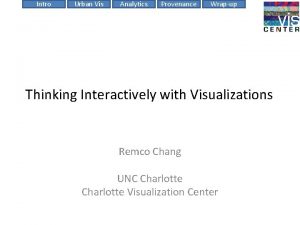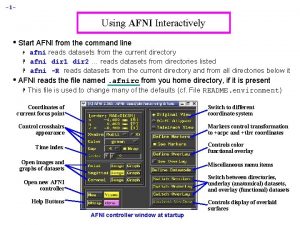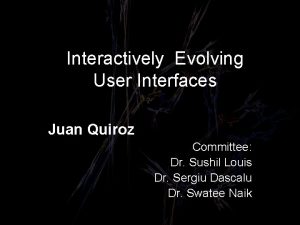Interactively Learning Game Formulations in a Physically Instantiated






























- Slides: 30

Interactively Learning Game Formulations in a Physically Instantiated Environment James Kirk jrkirk@umich. edu Soar Workshop 2013 June 6, 2013 1

General Motivation • How can an agent be taught a novel problem in a real-world environment? – Sufficient specification of the problem for agent to attempt to solve – Specifically focusing on games • Long Term Goals – Robots with teachable extendable behavior – Flexible interactive instruction – Grounded knowledge acquisition • General Requirements – Effective means to communicate problem space • Problem space defines legal actions, state representation, terminal states, and goals • No policy information – – Sufficient representation of problem specification Grounding of knowledge in shared environment Integration of perception, communication, reasoning, and action in one agent Generality-can learn a variety of games • Ex: Towers of Hanoi, Tic-Tac-Toe, Frogs and Toads puzzle 2

System Overview • • Instructive Dialog acquires problem space almost from scratch Starts with some primitive knowledge about: – Primitive verbs: pick-up(obj), put -down(xyz) – Primitive spatial relations: alignment along axes (ex: aligned along X axis) – Feature space knowledge of color, size, and shape • Acquires: – Verb-action knowledge (move) – Spatial prepositions (in) – Object attributes (red) 3

System Overview Game A 1 Tic-Tac-Toe move C 1 P 1 place block location C 11 C 12 Instructive Dialog to acquire problem space and needed concepts Game Concept Network Interpret perception to find legal actions and internally search for goal Manipulate environment using discovered solution 4

Shortcomings of Existing Approaches • Communication of problem space – – • Limited to formal languages, like C, STRIPS, or GDL Cannot learn spatial relations for describing problem space Do not share learned representations across multiple games Focuses on learning through observation of game play Representation of problem space – Problem space specifications, like STRIPS or GDL, do not ground their representations and are acquired programmatically – Require full action models and initial state descriptions • Integration – Few projects have attempted to integrate all of these components for end-to-end behavior – Knowledge must be grounded not only in perception, but across components 5

Major Contributions 1. A system that integrates the following components for end-to-end behavior for learning a subset of 2 D grid-based games 2. A method for acquiring grounded concepts of spatial relationships for prepositions, which are used in communicating the problem description 3. The Game Concept Network (GCN) 4. a) A representation of the game, including the problem space and goal/failure states b) The process to acquire the GCN through mixed-initiative structured dialog interaction c) The procedural knowledge to interpret the GCN to extract necessary information from the world A capability to internally simulate actions, search forward for the solutions, and produce action commands to manipulate the environment to achieve the goals. 6

Characterization of Games that can be Learned • Fully observable, deterministic, turn-based • Playable with discrete actions – No multi-verb actions (like replace) • Game encoded in current visual state – No rules based on history • Game state defined by – locations – spatial constraints between those locations – pieces that occupy locations • Covers many board games – Games such as Tic-Tac-Toe, Connect 4, N Queens puzzle – Also games/puzzles that can be described as an isomorphism (Towers of Hanoi) 7

Major Contributions 1. A system that integrates the following components for end-to-end behavior for learning a subset of 2 D grid based games 2. A method for acquiring grounded concepts of spatial relationships for prepositions 3. Game Concept Network (GCN) 4. a) A representation of the game, including the problem space and goal/failure states b) The process to acquire the GCN through mixed-initiative structured dialog interaction c) Procedural knowledge to interpret the GCN to extract necessary information from the world A capability to internally simulate actions, search forward for the solutions, and produce action commands to manipulate the environment to achieve the goals. 8

Prepositions for Spatial Relationships • • • Prepositions are necessary for describing the spatial constraints of board games Concepts must be grounded in shared representation- simulator/real-world Basic Requirements – Learned with few examples – Cover basic prepositions between two objects in Euclidean space • SVS primitives – Axis(X, Y, Z) alignment(aligned, greater than, less than) of two objects – Distance between objects along axes • Can learn/represent prepositions such as – – – – Left/right Front/behind Outside/inside Near/far Below/Above Diagonal Next to 9

Spatial relation representation “right of” Z distance X Y y-aligned z-aligned x-greater than Other potential compositions: “Next to” y-aligned z-aligned x-(less-than or greater-than) distance 1. 5 -3 “Above” y-greater-than z-aligned x-(any) “Inside” y-aligned z-aligned x-aligned 10

Spatial Projection “Put the object to the right of the blue block. ” Z X Y • Use average distance information to calculate XYZ projection coordinate – Randomly selects alignment if there are multiple possible alignments along an axis • Critical for actions and for simulation 11

Major Contributions 1. A system that integrates the following components for end-to-end behavior for learning a subset of 2 D grid based games 2. A method for acquiring grounded concepts of spatial relationships for prepositions 3. Game Concept Network (GCN) 4. a) A representation of the game, including the problem space and goal/failure states b) The process to acquire the GCN through mixed-initiative structured dialog interaction c) Procedural knowledge to interpret the GCN to extract necessary information from the world A capability to internally simulate actions, search forward for the solutions, and produce action commands to manipulate the environment to achieve the goals. 12

Representing Tic-Tac-Toe • What is a sufficient representation for playing Tic-Tac-Toe? • Recognize legal actions – Place your piece (red) in an empty location • Detect Goal – Three of your pieces on the board in a line (row, column, or diagonal) 13

Acquisition of GCN Game M: The game is tic-tac-toe. A: What is the name of a legal action in the game? action M: place A: What is the verb associated with this action? A 1 M: move A: Tell me the name of a parameter for this action. M: a block name verb parameters A: What is a constraint for this parameter M: the block is red move place P 1 A: What is a constraint for this parameter 2 1 M: the block is not in a location A: What is a constraint for this parameter block location M: finished. A: Tell me the name of another parameter M: a location spatial A: What is a constraint for this parameter M: the location is not in a block S 1 prep in with location name Tic-Tac-Toe constraints C 1 2 1 C 12 red not true spatial attribute S 2 prep in with block not 14 true

Interpret Tic-Tac-Toe • Index potential objects for each parameter • Apply descriptive constraints • Apply spatial constraints • Construct full match sets 15

Simulating Tic-Tac-Toe Visible World Internal SVS representation Goal Detected! Not Detected 16

Evaluation 1. GCN representation is sufficient to describe a variety of games 2. Grounded knowledge representation is sufficient for perceiving and acting in the real world 3. Knowledge acquisition is incremental, and transfers to other learning interactions 17

Games Learned 5 -Puzzle Towers of Hanoi Frogs and Toads puzzle • • Tic-Tac-Toe Connect-3 Bishop swap 4 Queens puzzle 18

Concepts learned for Games Game Spatial. Prep(s) Action(s) Goal Failure Tic-Tac-Toe in, linear place 3 -in-a-row none Connect-3 in, linear, above stack, bottom-place 3 -in-a-row none Towers-of. Hanoi in, above, smaller-than shift-stack, shift-tobottom Right-side none 5 -Puzzle in, diagonal, near slide Matchinglocation none Frogs and Toads left of, right of, in slide-left, slide-right, jump-left, jump-right Side-swap none 4 Queens in, linear place All-on-board Noneattacking 19

Towers of Hanoi Demo 20

Incremental Knowledge Acquisition • The interactive dialog can be long and tedious – Tediousness also do to the inflexibility of language use – Human instructional interactions can also be long/tedious • As the agent acquires knowledge of concepts, like prepositions, this interaction becomes quicker • Added additional capability to learn common concepts – For example action: place and goal: three-in-a-row – Relies on unique names for actions, goals, and failures 21

Results 80 70 Number of Interactions 60 50 no transfer 40 After Connect-3 30 After Connect-3 and Tic-Tac-Toe 20 10 0 Connect-3 Tic-Tac-Toe Queen-4 Experiment: Three games taught separately and sequentially 22

Tic-Tac-Toe after Queen-4 and Connect-3 If Tic-Tac-Toe is taught last, only 5 interactions are needed! M: the game is tic-tac-toe A: I do not know how to play tic-tac-toe. Tell me the name of a legal action in this game. M: place (learned in 4 Queens) A: Ok tell me the name of another legal action in this game, or finished if no more actions. M: finished A: Ok tell me the name of the goal in the game. M: three-in-a-row (learned in Connect-3) A: Ok tell me the name of a failure state in the game. (or none) Mentor: none A: Ok I have now learned the basics of the game. 23

Nuggets and Coals Nuggets • Can learn and play many different games • Works in real world environment • Concepts transfer between games Coals • Limitations in object permanence, preposition learning, verb learning • Currently limited to 2 -Dimensional board games • Iterative deepening insufficient for handling many games/puzzles 24

Questions? 25

References • Barbu, A. ; Narayanaswamy, S. ; and Siskind, J. M. 2010. Learning physically-instantiated game play through visual observation. In Proc. of ICRA’ 10, 1879– 1886. • Genesereth, M. , and Love, N. 2005. General game playing: Game description language specification. Technical report, Computer Science Department, Stanford University, Stanford, CA, USA. • Genesereth, M. and Love, N. General game playing: Overview of the AAAI competition. AI Magazine, 26(2), 2005. • Hinrichs, T. , and Forbus, K. 2009. Learning Game Strategies by Experimentation. Paper presented atthe IJCAI-09 Workshop on Learning Structural Knowledge from Observations. Pasadena, CA, July 12. • Kaiser, Ł. Learning Games from Videos Guided by Descriptive Complexity. In Proceedings of the 26 th Conference on Artificial Intelligence, AAAI-12, pp. 963– 970. AAAI Press, 2012. • Laird, J. (2012). The Soar cognitive architecture. Cambridge, MA: MIT Press. • Mohan, S. , Mininger, A. , Kirk, J. , & Laird, J. (2012). Acquiring Grounded Representation of Words with Situated Interactive Instruction. Advances in Cognitive Systems. • Roy, D. (2005). Grounding words in perception and action: computational insights. Trends in Cognitive Sciences, 9, 389– 396. • Thielscher. , M. A general game description language for incomplete information games. In Proc. of AAAI, 994– 999, 2010. • Thielscher, M. 2011 a. The general game playing description language is universal. In Proceedings of IJCAI. • Thielscher, M. (2011). General Game Playing in AI Research and Education. In J. Bach & S. Edelkamp (Eds. ), Proceedings of the German Annual Conference on Artificial Intelligence (KI) (Vol. 7006, pp. 26– 37). Berlin, Germany: Springer 26

Extra slides 27

N Queens Game 4 Queens puzzle: Place each queen(blue object) on the board so that none are attacking. Border locations reduce specification complexity. 28

5 Puzzle 5 puzzle: Slide pieces so that they end in their matching location (here: color). Can express adjacent relationship for slide action with multiple prepositions. 29

Connect-3: Another game described with an isomorphism like Towers of Hanoi 30
 Duxone colour formulations
Duxone colour formulations Serial polyadic dp formulation
Serial polyadic dp formulation Three categorical imperatives
Three categorical imperatives Categorical imperative formulations
Categorical imperative formulations Cuadro comparativo de e-learning
Cuadro comparativo de e-learning Physical educated person
Physical educated person What is violence in modifiers of human acts
What is violence in modifiers of human acts Matter can it be physically separated
Matter can it be physically separated Physically compromised
Physically compromised Output devices for physically challenged users
Output devices for physically challenged users Expectation value of hermitian operator
Expectation value of hermitian operator Slab is one or more physically contiguous frames.
Slab is one or more physically contiguous frames. Vinput leah
Vinput leah Corporate athlete model
Corporate athlete model Mentally spiritually physically emotionally
Mentally spiritually physically emotionally Why is physical diversity important
Why is physical diversity important Physically based animation
Physically based animation What is the shape of dr jekyll's house
What is the shape of dr jekyll's house Pwd act 1995
Pwd act 1995 Pirate game theory
Pirate game theory Farming game instructions
Farming game instructions A formal approach to game design and game research
A formal approach to game design and game research Game lab game theory
Game lab game theory Liar game game theory
Liar game game theory Liar game game theory
Liar game game theory Pygame reinforcement learning
Pygame reinforcement learning Lda supervised or unsupervised
Lda supervised or unsupervised Concept learning task in machine learning
Concept learning task in machine learning Analytical learning in machine learning
Analytical learning in machine learning Example of habituation
Example of habituation Difference between lazy learner and eager learner
Difference between lazy learner and eager learner
